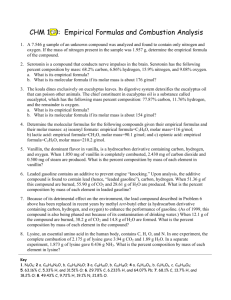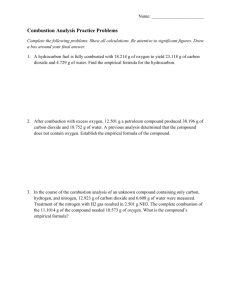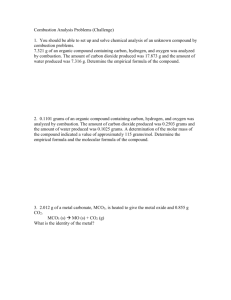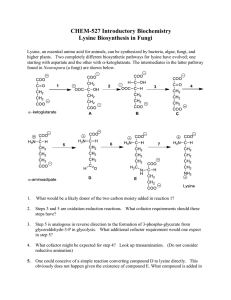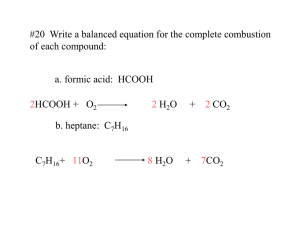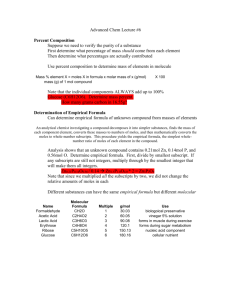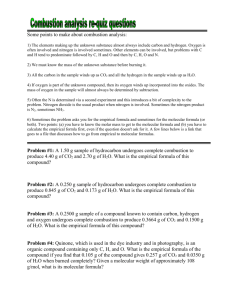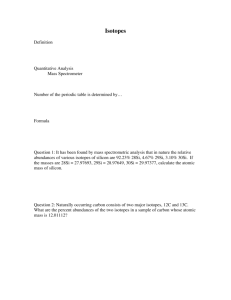Combustion Analysis Problems Worksheet
advertisement
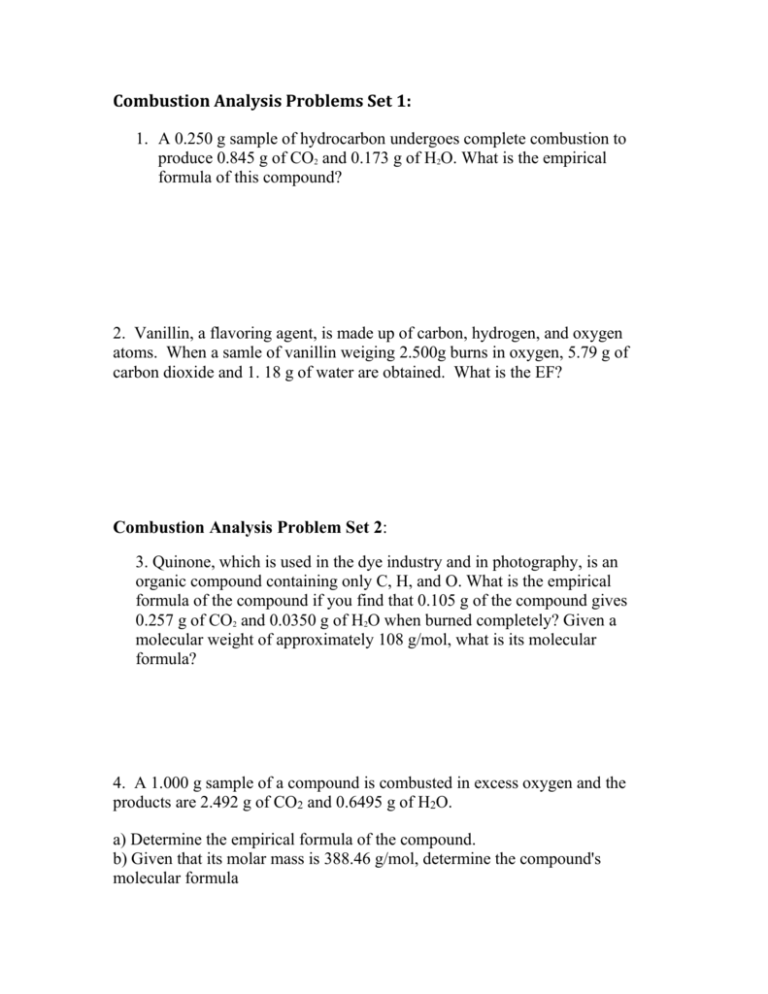
Combustion Analysis Problems Set 1: 1. A 0.250 g sample of hydrocarbon undergoes complete combustion to produce 0.845 g of CO2 and 0.173 g of H2O. What is the empirical formula of this compound? 2. Vanillin, a flavoring agent, is made up of carbon, hydrogen, and oxygen atoms. When a samle of vanillin weiging 2.500g burns in oxygen, 5.79 g of carbon dioxide and 1. 18 g of water are obtained. What is the EF? Combustion Analysis Problem Set 2: 3. Quinone, which is used in the dye industry and in photography, is an organic compound containing only C, H, and O. What is the empirical formula of the compound if you find that 0.105 g of the compound gives 0.257 g of CO2 and 0.0350 g of H2O when burned completely? Given a molecular weight of approximately 108 g/mol, what is its molecular formula? 4. A 1.000 g sample of a compound is combusted in excess oxygen and the products are 2.492 g of CO2 and 0.6495 g of H2O. a) Determine the empirical formula of the compound. b) Given that its molar mass is 388.46 g/mol, determine the compound's molecular formula Combustion Analysis Problem Set 3: 5. Lysine is an amino acid which has the following elemental composition: C, H, O, N. In one experiment, 2.175 g of lysine was combusted to produce 3.94 g of CO2and 1.89 g H2O. In a separate experiment, 1.873 g of lysine was burned to produce 0.436 g of NH3. The molar mass of lysine is approximately 150 g/mol. Determine the empirical and molecular formula of lysine. 6. Dimethyl nitrosamine is a known carcinogen. It can be formed in the intestinal tract when digestive juices react with the nitrite ion is preserved and smoked meats. It is made up of carbon, hydrogen, nitrogen, and oxygen atoms. A 4.319 g sample of dimethyl nitrosamine burned in oxygen yields 5.134 g of CO2 and 3.173 g of H2 O. The compound contains 37,82% by mass of nitrogen. What is the empirical formula of dimethyl nitrosamine?
